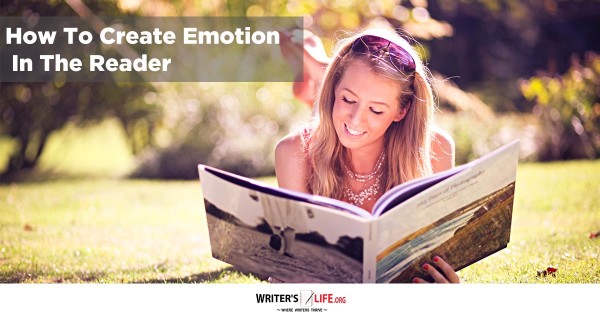- How To Tackle Jealousy In Creative Writing
- Common Submission Mistakes
- How To Stop Your Blog Becoming Boring
- The One Thing Every Successful Writer Has In Common
- How To Make Yourself Aware Of Publishing Scams
- Why Almost ALL Writers Make These Grammar Mistakes At Some Point
- 5 Tips For Authors On How To Deal With Rejection
- Top Mistakes to Avoid When Writing a Novel
- How to Avoid Common New Writer Mistakes
- 10 Mistakes New Fiction Writers Make
How To Create Emotion In The Reader

One of the most important, and perhaps most difficult aspects of writing a novel is trying to engage your readers, so you make them feel something towards your book. Without engaging emotionally in your story, readers will be left feeling cold. In short, they need to care. About your characters, about what happens to them, about the story that unfolds.
There are a huge number of emotional reactions you can try and catalyse in your readers. Love, hate, fear, amusement, indignity, tension, and many more besides. Some of the best stories manage to capture all of these emotions in one story. However, this many not be possible for every book. Despite this it is imperative that you ensure your readers can immerse themselves in the world you have created, that they feel touched or moved in some way, and that they engage with your characters on an emotional level.
So, how do we accomplish this?
Show don’t tell
This is an age-old piece of advice for every writer. It is one, however, that we should always pay attention to. Readers need room to be able to connect with your characters and your story. If you simply list everything that is happening, every detail they can see, and every single emotion that they feel, your readers doesn’t have the opportunity to feel anything for themselves. Don’t tell your reader your character is angry, sad, overjoyed etc. Show them that they are. Readers need to be able to resonate with the emotions that your character feels, to feel almost as though what is happening to your characters is happening to them. They need to empathise, but not be told to do so.
Create a character your readers will love
All of the characters in your story have an important part to play. Naturally the protagonist is the most influential. Make this character exciting, likeable, admirable, and flawed. Readers need to be able to identify with them and, in order to do that, your character must be human. If they are too perfect, powerful, or evil it will be difficult for your reader to find any common ground.
Create a character your readers will hate
Not all characters need to be ones your readers will like. Evil characters work just as well when trying to create emotion in your reader. An unsympathetic character can be very powerful, evoking a reaction of repulsion, outrage, distaste is still engaging - providing the reader reacts to their actions in the desired way.
Be bold
If you write a story where nothing really happens, then it is going to be difficult for your reader to care. Dramatic, emotional scenes need to happen. The action needs to have an impact on your characters. Always ask yourself, ‘how does my character feel about this?’ and make sure you have captured that in your writing. If you play it safe and omit scenes of joy, pain, cruelty, fear and love, your reader has nothing to grasp hold of, and your story will leave them feeling unaffected and unsatisfied.
Build anticipation
End every chapter of your book on a cliffhanger so your reader can’t wait to find out what happens next. Your entire book should be building towards a climax at the end, however, throughout the story you need to keep tension, suspense and anticipation building. If a reader feels excited, nervous, desperate to read what the next chapter brings, then you can rest assured they are enjoying your book, and you are doing your job quite well!
Create choices
Your characters should be on a journey, and that journey should have crossroads throughout. They have to decide which path to take, and each time they choose there should be consequences - good or bad. Putting pressure on your characters to make decisions will keep readers engaged, and rooting for them to make the right ones.
Have a twist
Just when your readers thinks they know how the story will pan out, shock them with a dramatic twist. This often works well at the end of the story, and will leave your readers aghast, overjoyed, or broken-hearted at what has happened. Writing twists is difficult, you want to surprise your reader, but if it is too out of the blue, they may feel cheated so if you do decide to include a twist, make sure you think carefully about how to employ it.
So, there you have it. By using these creative devices you can help your readers engage emotionally with your story - which is so important when it comes to writing a successful book.






























